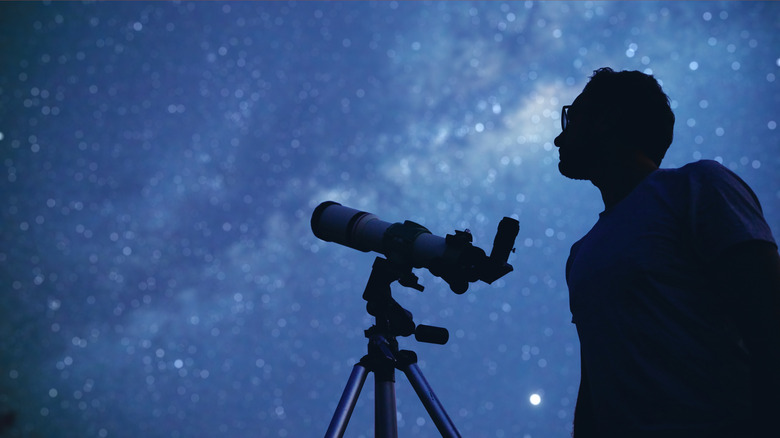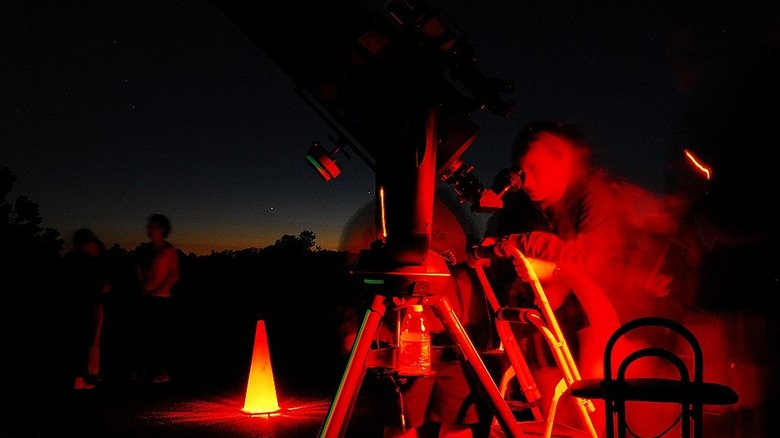The Reason Why Astronomers Need To Use Red Flashlights At Night
Despite those friends who call themselves "night owls," humans are mostly diurnal creatures built for moving around their environment and going about their lives during daylight hours. One of the reasons we know this is because our eyes are very different from nocturnal animals that call darkness their home.
For instance, diurnal creatures have rounded pupils, while nocturnal animals have pupils that are slit, such as those found in big cats. Nocturnal creatures, like owls, have more enormous eyes (via Arizona Retina Project). And then there's the presence of the tapetum lucidium, which sits right behind the retina like a mirror to bounce all the available light back onto the retina so they can effectively see in the dark. This trait is commonly known as eye-shine, like when a flashlight beam reflects off the eyes of an animal at night and causes them to shine brightly.
However, both diurnal and nocturnal creatures have pupils that dilate or constrict to control light. And both have lenses that focus the image and nerves that communicate that image back to the brain. They also have the same two kinds of light-sensing cells in their eyes called rods and cones (via Northern Woodlands). According to the National Park Service, rods are best used for detecting motion in the more or less black and white conditions found in low light situations, while cones are primarily used for seeing in color. Daytime creatures have more cones and fewer rods than nocturnal ones, while night stalkers have more rods and fewer cones. It turns out that the cones are able to pick up red light quite effectively.
A red light actually means go for astronomers
There are three types of cones, each detecting a different color (red, green, and blue), while the more numerous rods can't provide any color details. Both can get overexposed if they're blasted with too much light and basically become blinded by the light. Like when you turn on a bright flashlight at night.
Night vision, also known as dark adaption, is governed by two things. First, the pupils must open up to let in more light, which doesn't typically take more than a handful of seconds. The second part of the equation is the chemical change that must also occur. Once the rods and cones are in the dark, they start to create a pigment called Rhodopsin (also known as visual purple), which takes anywhere from 20 to 40 minutes to kick in before "night vision" becomes effective. Once achieved, any bright light will disrupt it, and the process has to start all over again (via NPS).
Which absolutely no one wants when standing around in the dead of night looking up to the heavens. Thankfully, there is a workaround. The rods in the human eye have a peak sensitivity of around 530 nm, but red light has a wavelength between 635 nm anf 700 nm and is therefore undetectable by the rods and won't ruin the night vision effect. Thus making a flashlight that shines red light the ideal tool to take with you during your sky-watching session.

